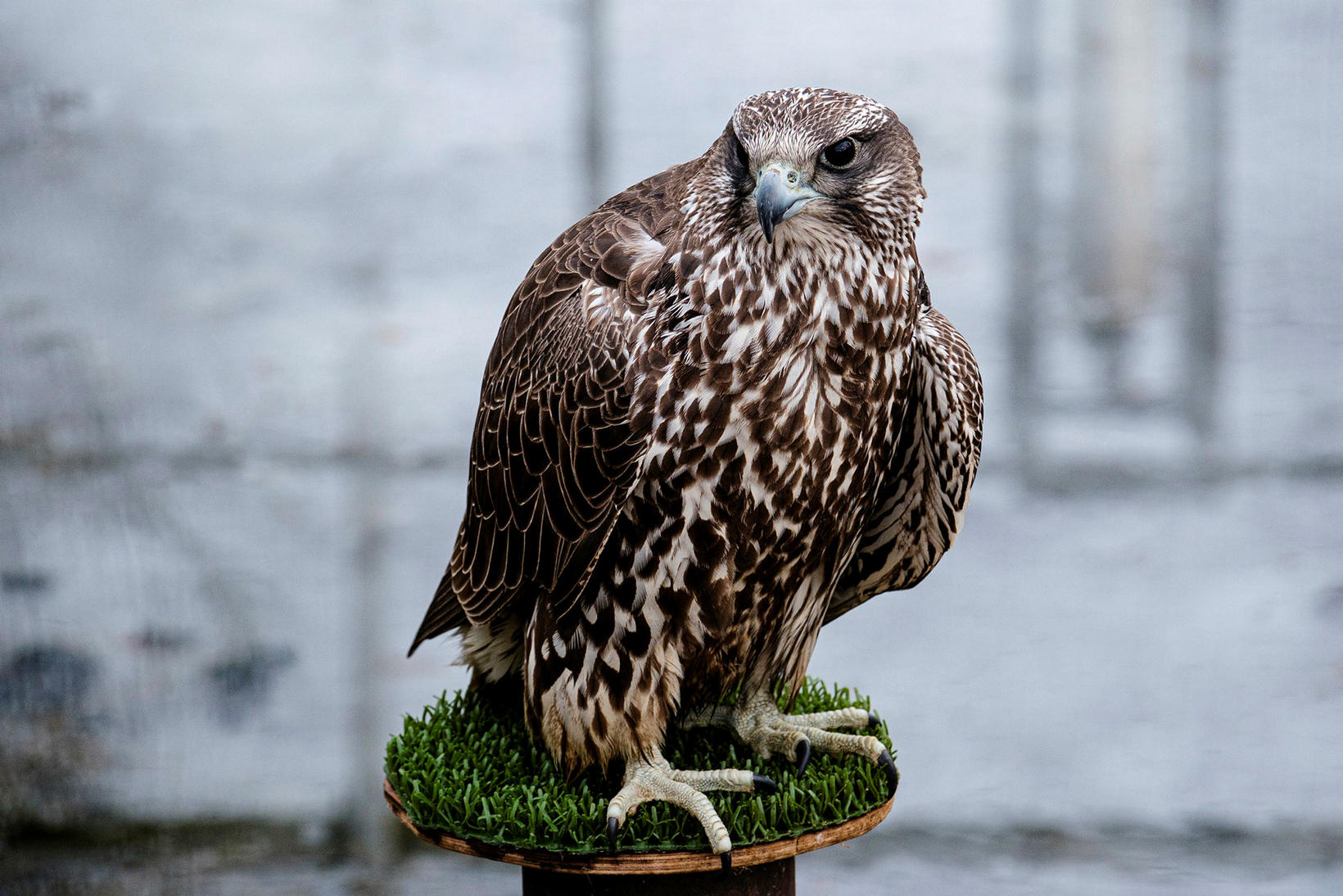Steady decline in the gyr falcon population
The population of the gyr falcon has been decreasing steadily in the last few years and the situation needs to be monitored closely. mbl.is/Kristinn Magnússon
“This has been the case for the last 3-4 years,” says Ólafur Karl Nielsen, a bird scientist at the Institute of Natural History, about the steady decline in the number of the gyr falcon populations.
He adds that the situation needs to be closely monitored, as the population has been considerably smaller in 2023 than previously anticipated.
Not really a scarcity of ptarmigan
Research has been conducted on the population size of gyr falcons in northeast Iceland since 1981, but about 10-15% of the total population of falcons in Iceland breeds in this area, Nielsen says. Gyr falcons devote themselves to the nest and are there all their lives, and the nest is passed on to the next generation of birds, and many are thought to have been used since the beginning of the falcon population. This summer, all the nests were visited to count how many were in use and it turned out that 41% of them were active. A decrease in the breeding population could reflect large mortality of geldings, which would affect new birds coming up, but also the mortality of nest-birds.
The rock ptarmigan is the main food source for falcons and Nielsen says that there is often a connection between the population size of these species during the normal year-round. “Given the number of ptarmigans and how these two populations, the ptarmigan population and the falcon population, have behaved before and just how good the mating was for the falcon population a few years ago, 2018 and 2019, one would have expected a larger population size.” Nielsen says that while there is not much ptarmigan there is no scarcity compared to what has often been the case before.
From 70 pairs to 40 pairs
“The breeding season was a very good one, so you would have expected that recruitment would have increased by now. But young ones that were hatching in 2018 and 2019 don’t seem to be returning,” Nielsen says, adding that the falcon population is not large for now.
“At best, there are 3-400 breeding pairs, and maybe hundreds of undeveloped birds. At best, we’d be talking about 2,000 individuals, but the number is down from what we’ve seen before,” he says. “There have been 70 pairs in this area, and this year, they were down to 40, which is a big drop.”
Infection from seabirds
Nielsen believes that the most likely explanation for the lack of recruitment is due to bird flu. “Bird flu affects seabirds mostly in Iceland, including the northern gannet, which is an unusual food for falcons. But falcons lay on carcasses and if they find dead or dying birds, they eat them, even though they usually don’t touch the northern gannet.” He adds that more than a year ago, a falcon was spotted feeding on a northern gannet, which was probably a flu-dead bird, and the same was true of one bird in 2022, which was confirmed by the Icelandic Food and Veterinary Authority (MAST).



/frimg/1/57/93/1579337.jpg)


/frimg/1/57/94/1579405.jpg)

